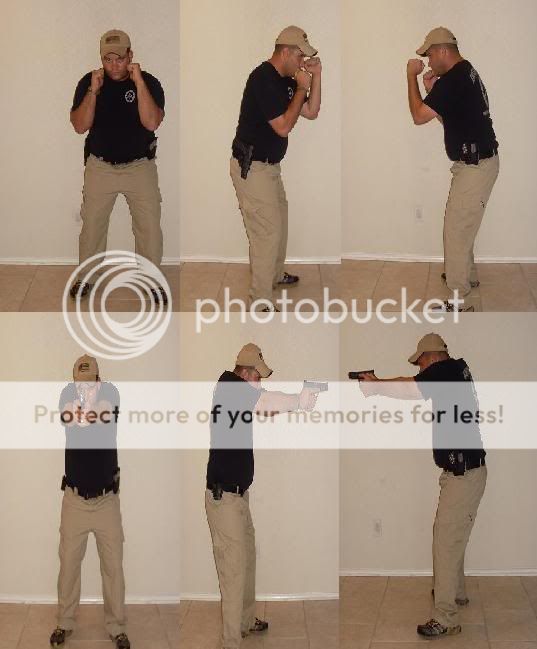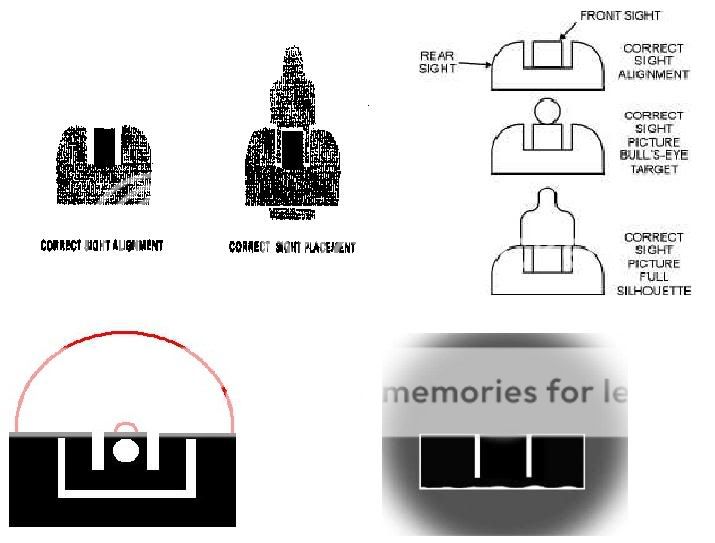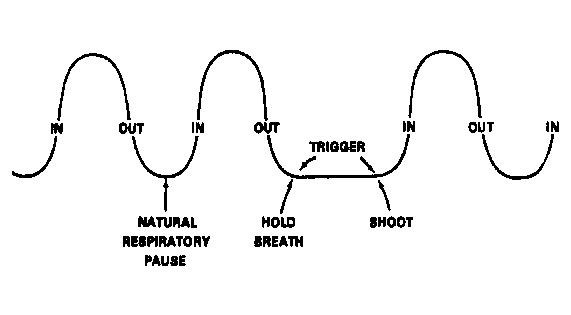This is to help out some of the younger or less experienced shooters, just my opinions and teachings. Feel free to pick it apart or add to it. I figured it would be a good thing for some of the younger guys we have on the site and would give some of the old guys a refresher.
Pistol marksmanship is simple in the sense that it can be summed up into four key fundamentals, however it can be very difficult to grasp and/or put together to achieve the over all goal in shooting that the shooter has set. Understanding that goal setting is the key to improvement; shooters must understand how to set proper goals.
Basic level shooter goal: Consistency in grouping at a distance of 25yards, maintaining all shots fired on a 12 inch white paper plate, using slow fire and call your shot drill’s.
Fundamentals of marksmanship:
Position (Grip & Stance)
There are several different positions, stances and grips that can be affiliated with shooting a pistol. However some are simply better then others so we won’t go into details about the other types. We will concentrate on what you should be doing to deliver an accurate shot.
Starting with a one handed grip, take the firing hand and form a salute, separate the thumb from the salute. The meaty “web” portion between the thumb and index finger should be seated all the way into the top of the back strap. Wrap the lower three fingers around the grip panels and place the index finger down “inline” with the side of the pistol. Then allow the thumb to naturally rest on the grip panel (preferably inline with the slide).
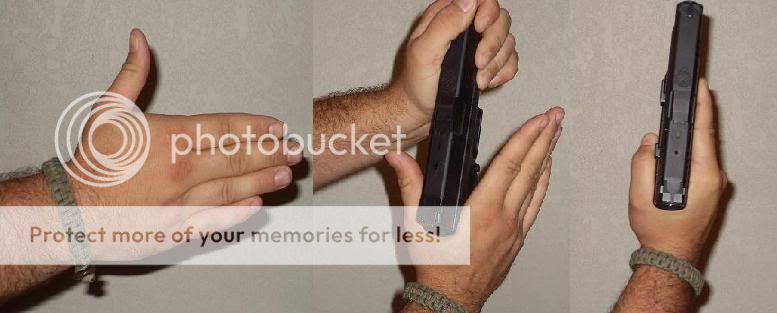
For a two-handed grip take the non-firing hand and make a salute, separating the thumb from the salute. Take the non-firing hand thumb and palm and slide it into the open area of the grip panel. Rest the non-firing hand “thumb” directly under the firing hand thumb (pointing inline with the slide “towards the target”). Wrap the remaining fingers around the firing hand fingers.

Now to present the pistol, regardless of a one-handed or two-handed grip, lock the arm(s) completely out at a full extension. Raise the pistol until the sights are in line with your vision. If the sights are not already aligned, relax your arm and slightly adjust (right or left) the way the pistol is sitting in your grip. Continue to do this until the sights are aligned every time you bring the pistol up.
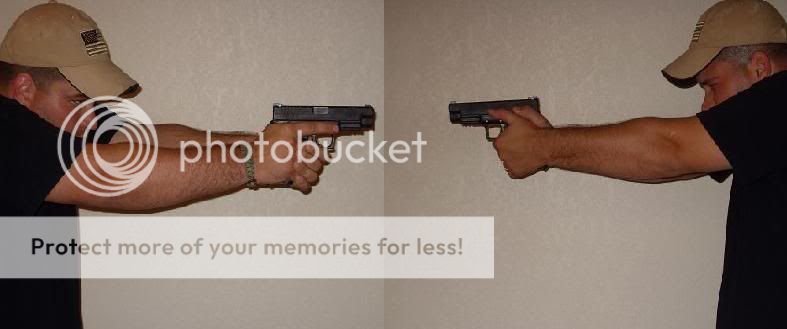
Stance is based upon many things and in most cases becomes environment dependent; a common practice is to ensure that your stance is aggressive and athletic (commonly referred to a fighters or boxers stance). Now foot placement (non firing foot forward or even across) is not as important as maintaining an aggressive poster. You want you knees to be slightly bent, you want to slightly lean into the pistol at the hips. This will allow you to maintain the position longer and will allow you to absorb recoil.
